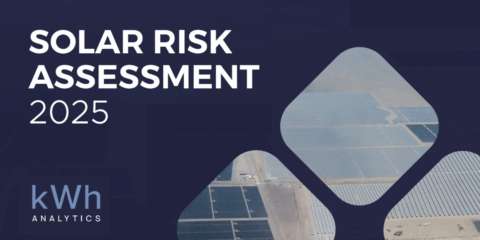An annual report from risk assurance firm kWh Analytics examined the top risks facing U.S. solar projects today and...
Solar Risk Assessment 2025: PV underperformance, climate change modeling and beyond
The seventh edition of the Solar Risk Assessment from kWh Analytics is now available. This annual report brings together data-driven insights from leading voices across the solar industry to explore emerging risks faced by solar developers, operators and financiers. The 2025 report covers a range of challenges, including: Intensifying extreme weather impacts The need for high […]


